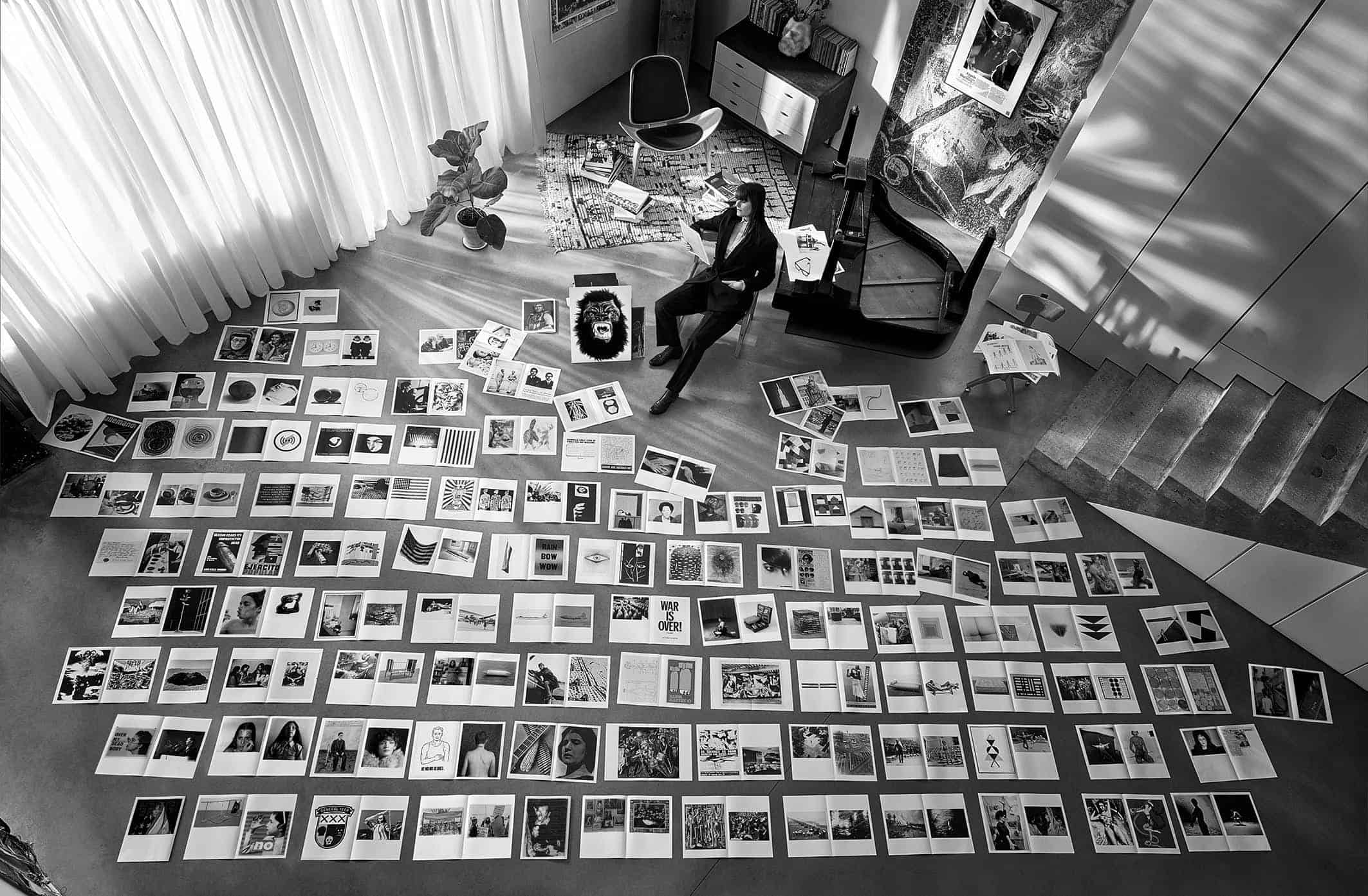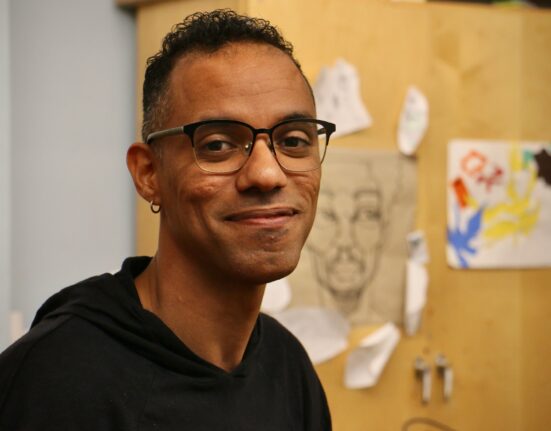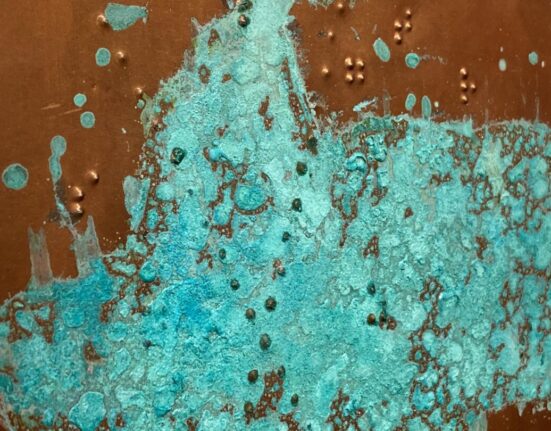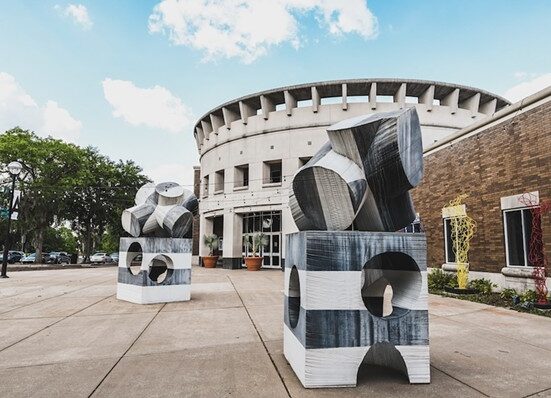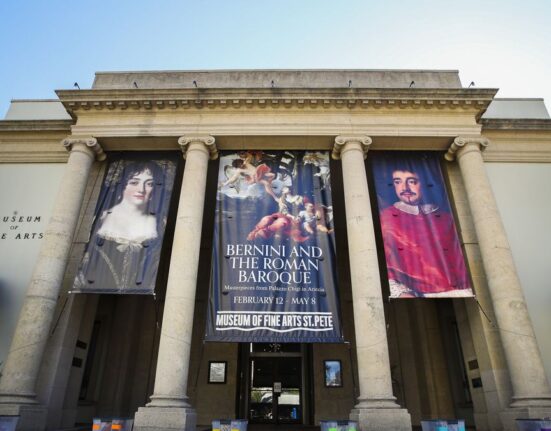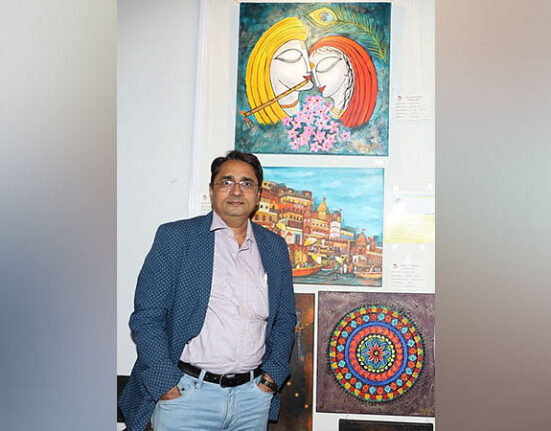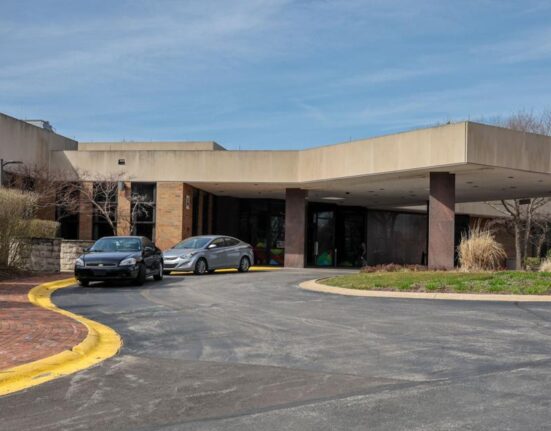The artisanal process of extracting new shapes from recycled materials, especially those classified as worthless, requires a lot of attention, concentration, and perseverance. In the shadow of conscious actions and repetitive ritual practices such as sewing, embroidery, mending, and reappropriation of used fabrics or contents of visual culture, the revolutionary potential of organic work emerges, consequently revealing the intertwining of hybrid forms in the assemblages. Silvia Federici, in her book Re-Enchanting the World: Feminism and the Politics of the Commons, wrote that dedication to affective and manual labour has a revolutionary potential, due to its collective specificity. Despite the fleeting nature of these repetitive gestures, their enforcing power lies in consistency, commitment, and the possibility of creating connections in communities. The rituals that accompany organic work and daily practices are characterised by creativity in combining heterogeneous, incompatible elements with ephemeral specificity which, however, are usually subject to neglect, underestimation, and relegation to the periphery of collective memory. As a result, contemporary sculpture is often presented as evidence of personal microcosms, created through the playful reuse of recycled materials or archival documents. The inclusion of a deconstruction strategy that takes into account the artist’s personal experiences is usually placed in a specific socio-political context and often refers to the legacy of modernist architecture. This is usually achieved by abstracting objects or structures from everyday life into a new context. Therefore, contemporary sculptural installations are not perceived as permanent objects, but as fluid elements, subject to constant change, often treated in cinematic categories, constituting testimony to the collective imagination and memory. The spectator becomes an active part of the exhibition space, where the concept of individualism dissolves in favour of a collective experience. Visual artists often take on the role of archivists, journalists, or curators, capable of reconstructing forgotten or overlooked fragments of history. This perspective helps to analyze ideas and typologies of production in Western culture and to identify errors in its structure, contributing to the dialogue of the legacy of modernist architecture and the visual arts. Polish visual artists address these themes by harking back to the Polish People’s Republic period when impulsive and reckless investments in modernisation proved harmful to the urban fabric. Some of them feel the need to raise the same issues that architecture deals with, to create a space in which strategies of reduction and deconstruction are an alternative to the constant focus on infinite productivity. This is why contemporary artists often experiment with three-dimensional forms that deliberately introduce an element of chaos and uncertainty into space, which allows them to question and reconsider the existing structures of our everyday lives.
Here is my list of the top 10 emerging Polish visual artists who are actively experimenting with various art forms and have already made significant contributions to the international art scene.
Berlin-based artist Alicja Kwade‘s sculptures and installations focus on experimentation with ordinary materials such as wood, glass, and copper, elaborated through chemical processes that lead the observer to question their habits of visual perception to explore the variability of the physical world. Kwade’s work often uses reflections, repeated sounds, and imprecise copies to create immersive spaces that take shape into sculptural objects, using forms such as round spheres and metallic structures, video, and photography. The result of the artist’s intervention is the creation of a deceptive and minimalist sculptural system that fits perfectly into various landscapes, such as metropolises or vast steppes, while being able to make one reflect on the presence of planetary forces in constant motion. In the installation Para Pivot (2019), on the terrace of the Metropolitan Museum of Art in New York, overlapping structures rotate around each other: iron frames and celestial spheres, where the stone mass bears traces of material imperfections, deliberately left by the artist to evoke the existence of parallel worlds and multiverses that multiply. For the 2021 Helsinki Biennial Kwade created Pars Pro Toto, a work made from stone spheres in which the artist highlights the rich texture of the minerals and the stratification of the rock created by a long and ancient sedimentation process capable of transforming matter on a time scale. The work fits perfectly into the horizon of the landscape of the island of Vallisaari, creating an immersive sensation for the observer. Another version of the work, eight spheres made of marble from different continents, was presented at the 57th International Art Exhibition of the Venice Biennale in 2017. At the same Biennale, the artist presented her work, WeltenLinie! , where she created glass structures that gain meaning through the intervention of visitors. Vibrating objects multiply, transforming space into temporal matter. In 2022, at the Konig Museum in Vienna, the artist proposed an immersive installation, Medium Median, (Homo-Mensura), consisting of concrete forms that reflect planetary forces in constant movement, which constantly interact with each other. At the end of January 2024, Kwade inaugurated her first solo exhibition in India, Matter Moments at Nature Morte. On that occasion, the artist juxtaposes stainless steel, polished bronze, stones, and branches captured from everyday life and deconstructs them to explore the abstract structures that make up the surrounding world. Kwade is represented internationally by Galerie Kamel Mennour, 303 Gallery, i8, and since 2023 by Pace Gallery.
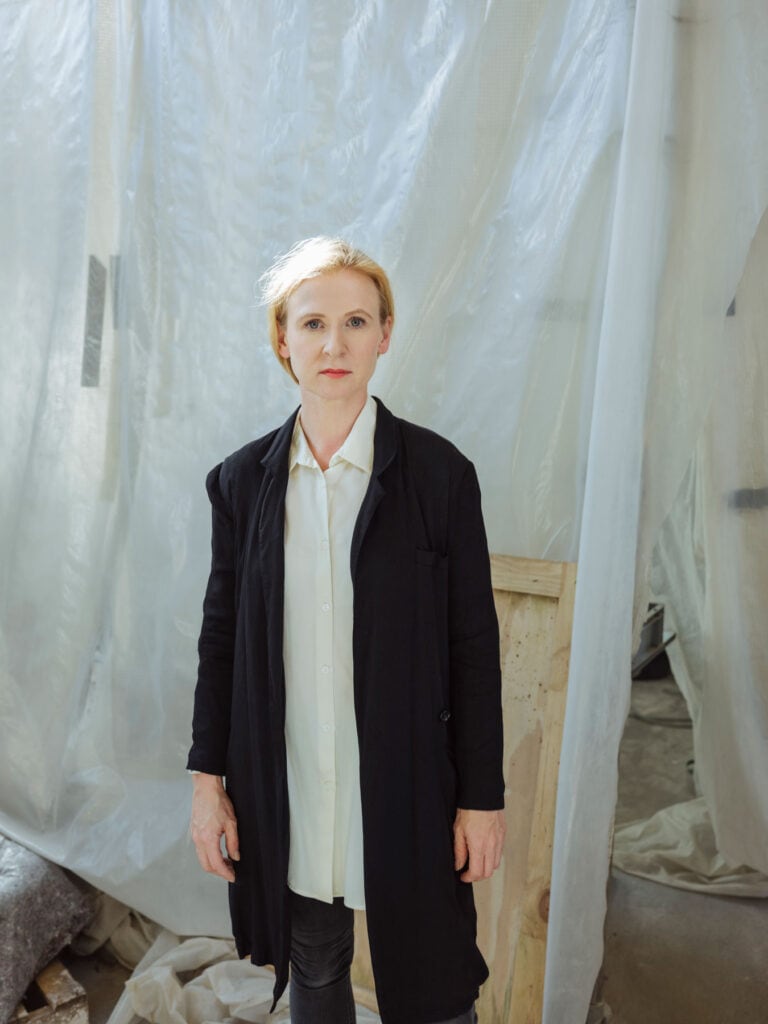

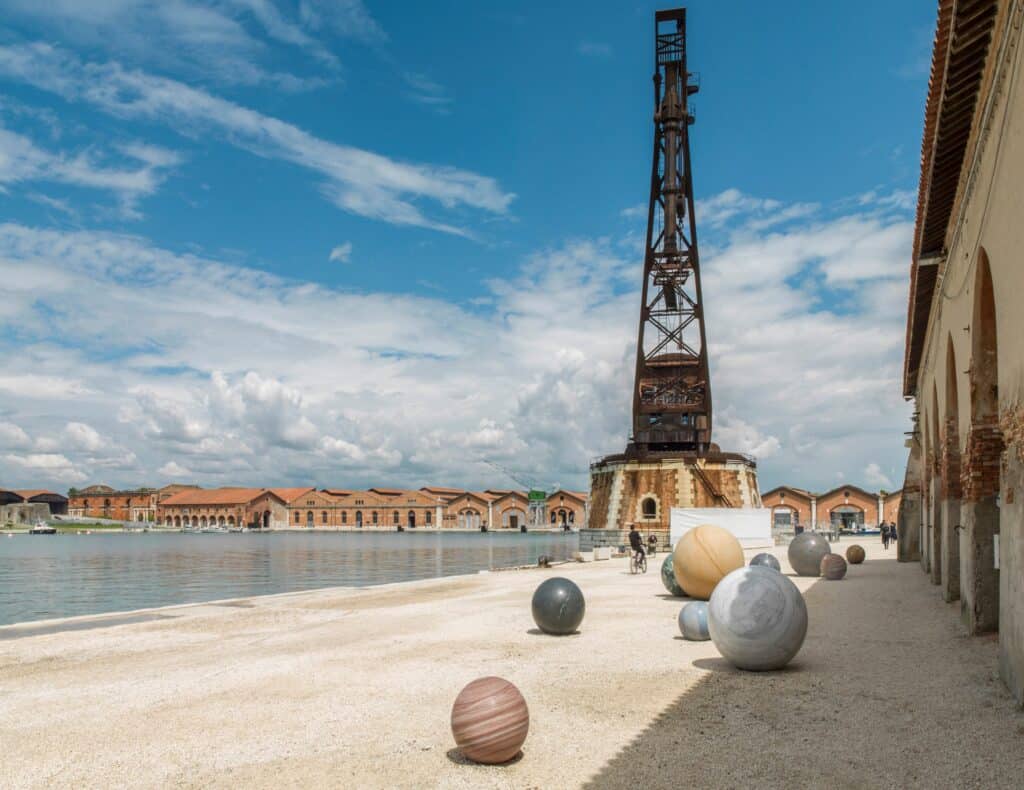

Toto, 2017, Installation View, Viva Arte, Viva curated by Christine Macel, 57th International Art
Exhibition, La Biennale di Venezia, Photo by Roman März © Alicja Kwade
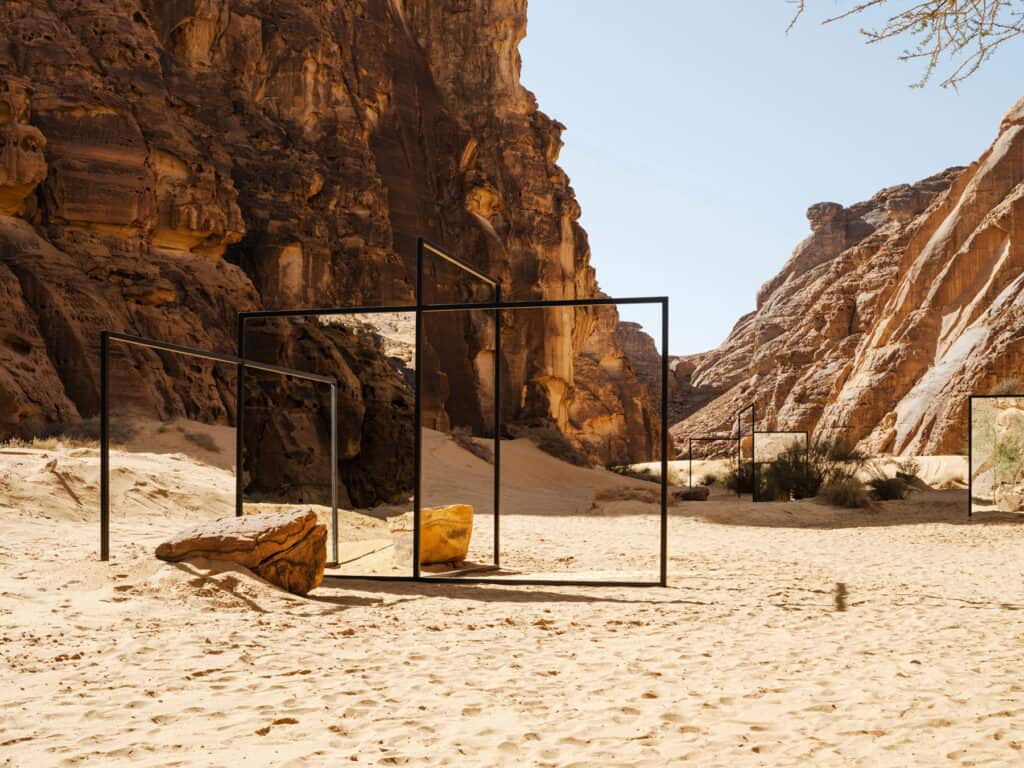

AIUIa, Photo by Lance Gerber © Alicja Kwade
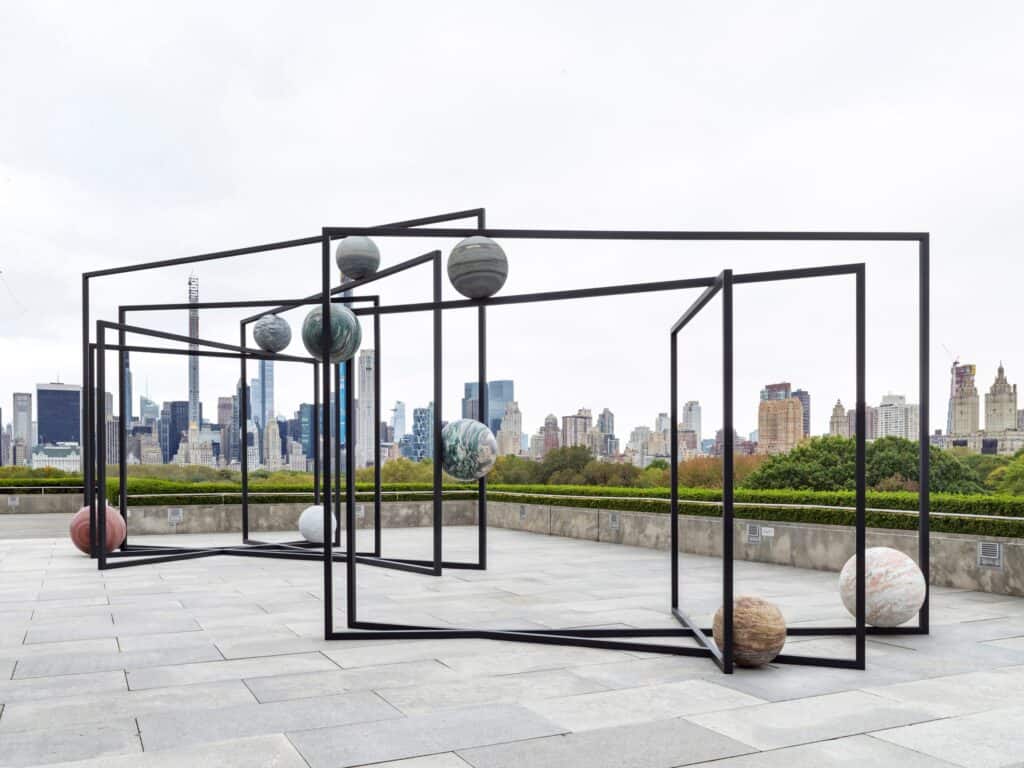

II, 2019, Installation View, Metropolitan Museum, New York, Photo by Roman März © Alicja Kwade
Agnieszka Kurant currently lives in New York, studied art history at Łódź University, photography at Łódź Film School, and creative curation at Goldsmiths College. In her interdisciplinary research, Kurant explores the fusion between reality and fiction in the collective imagination and the fleeting status of objects, intersecting visual culture and neuroscience to map contemporary political and economic systems. Her artistic projects question the concept of individual authorship and the way in which it is explored in the process of transformation of matter. In one of her most famous works, the installation A.A.I. of 2015, the artist presented sculptures created in collaboration with entomologists from the University of Florida based on termite colonies, for which the artist provided unusual building materials, such as crystals, gold, and neon sand. Within a few months, thanks to the work of insects, a shiny set of gnarled, multi-colored electric needles appeared. The work intends to symbolically capture the phenomenon of collective intelligence and crowdsourcing work marked by invisible exploitation. In 2022, Kurant presented her project Crowd Crystal at Castello di Rivoli in Turin, consisting of evolving installations and sculptures aimed at examining the impact of collective intelligence phenomena on naturecultures and non-human intelligences – from bacteria and unicellular organisms. Kurant represented Poland together with Aleksandra Wasilkowska at the 12th International Architecture Exhibition in Venice in 2010, where she created the Emergency Exit project. Over the years, Kurant also presented a major solo exhibition at the Sculpture Center in New York and was commissioned to create the facade of the Solomon R. Guggenheim Museum in New York. She received the Frontier Art Prize in 2019 and was among the recipients of the Pollock-Krasner Award in 2018. Furthermore, the artist has completed international residencies in Europe and North America, collaborating with the MIT DreamLab and the Smithsonian Institute. She is a member of the Berggruen Institute and was a recipient of LACMA Art + Technology Grants in 2020. Her monograph, Collective Intelligence, was published by Sternberg Press/MIT Press in the fall of 2021. Agnieszka Kurant recently interviewed by Hans Ulrich Obrist appeared in issue 41 of Cura magazine and curated an online series of films for e-flux Film Uncomputables about cybernetics and alien intelligence.
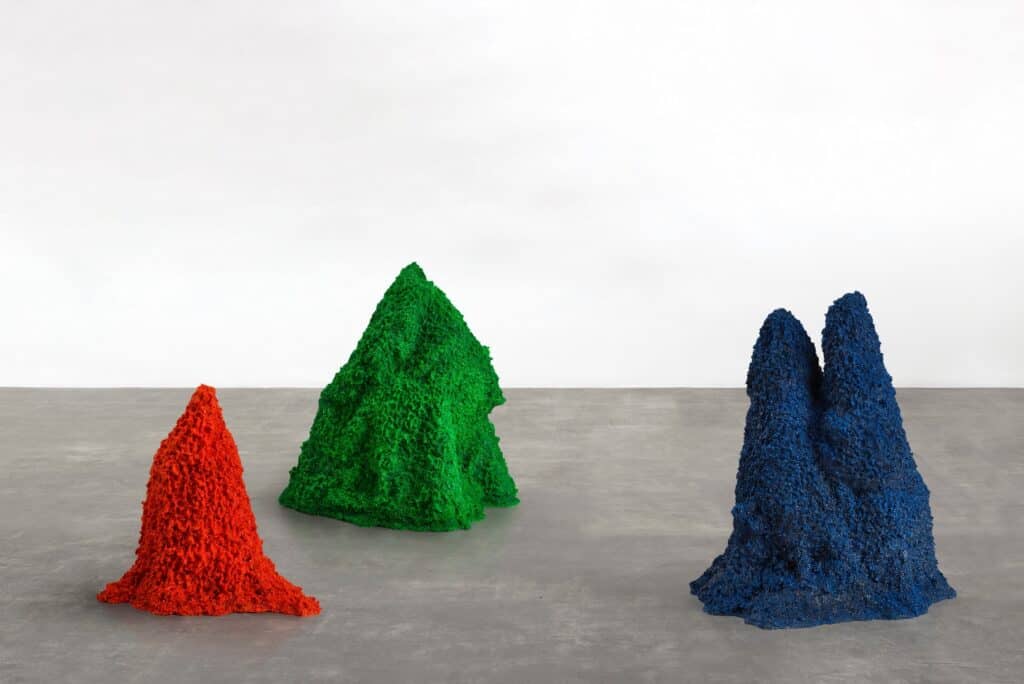

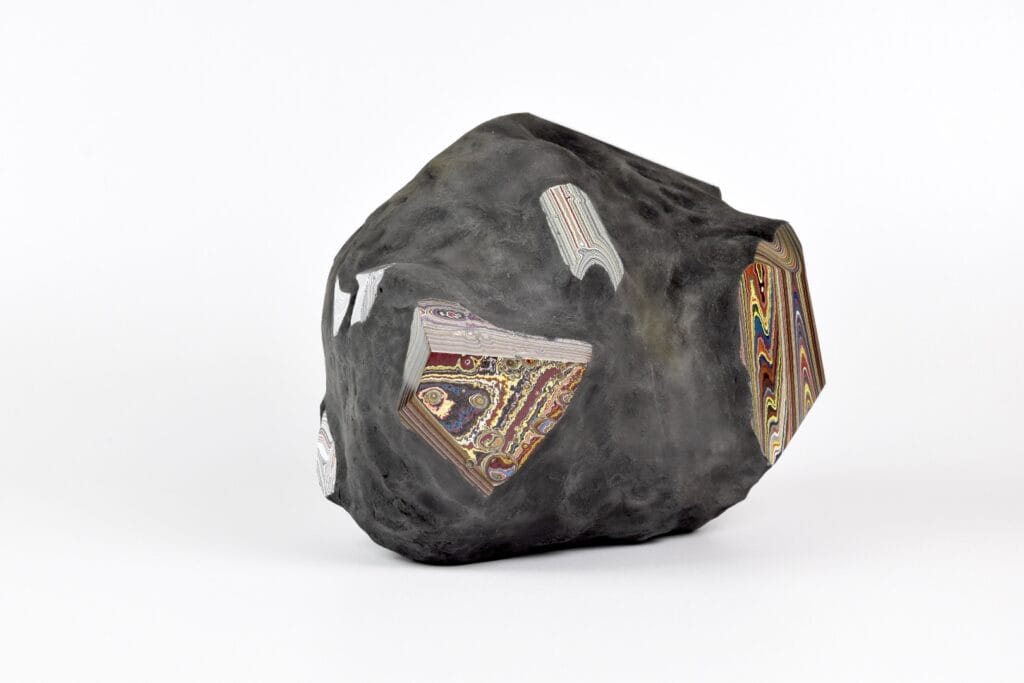



Goshka Macuga graduated from Goldsmiths College and Central St. Martins School of Art and Design. Her practice is based on historical and archival research, which forms the basis of her audiovisual installations, sculptures, photographs, tapestries, and collages. As an artist she experiments with the role of curator, historian, and designer, trying to question the trend of Western historiography and political structures by creating installations in which she combines archival materials, museum artifacts, and objects made jointly with professionals from various fields. Her works often dialogue vividly with works already present in the collections of the various museums in which she exhibits, demonstrating that sometimes the research process in the archives is more important than the final result obtained because it inspires the viewer to rediscover the past to gain a better awareness of the present. One of the highlights of her career was her Liverpool Biennial exhibition in 2006, Sleep of Ulro, where she experimented with architectural forms collaborating with other artists and architects. Goshka Macuga explored the role of curatorial work by questioning the value of individual authorship and the rigid hierarchies prevalent in the art world. In the installation The Nature of the Beast (2009) Macuga, in a curatorial and performative gesture, vividly reworks the events linked to the exhibition of Picasso’s Guernica and its strong position in the local political sphere. In the exhibition The Son of Man Who Ate the Scroll (2016) at the Prada Foundation in Milan, presenting a humanoid robot to the public, the artist experiments with knowledge development tools that explore the art of rhetoric and memory, in dialogue with the foundation’s collections. In recent years she has created a series of large-scale tapestries that weave her ideas into mind maps. One of Macuga’s series of 3D woven tapestries, Make Tofu Not War (2018), speaks to the speculative potential of reimagining the world using sci-fi plot devices. In 2019 you created What Was I?, a post-apocalyptic exhibition at Prada Rong Zhai, Shanghai. Recent group exhibitions include the Uffizi Gallery in Florence and Reaching the Stars at Palazzo Strozzi (2023), where she presented a monumental space rocket, GONOGO. Macuga is represented by Kate MacGarry Gallery in London and Andrew Kreps Gallery in New York. Since she was nominated for the Turner Prize in 2008 and participated in Documenta 2012, her work has been included in numerous public collections such as Tate, MoMA, Government Art Collection, Arts Council Collection, MCA Chicago, and Castello Di Rivoli.
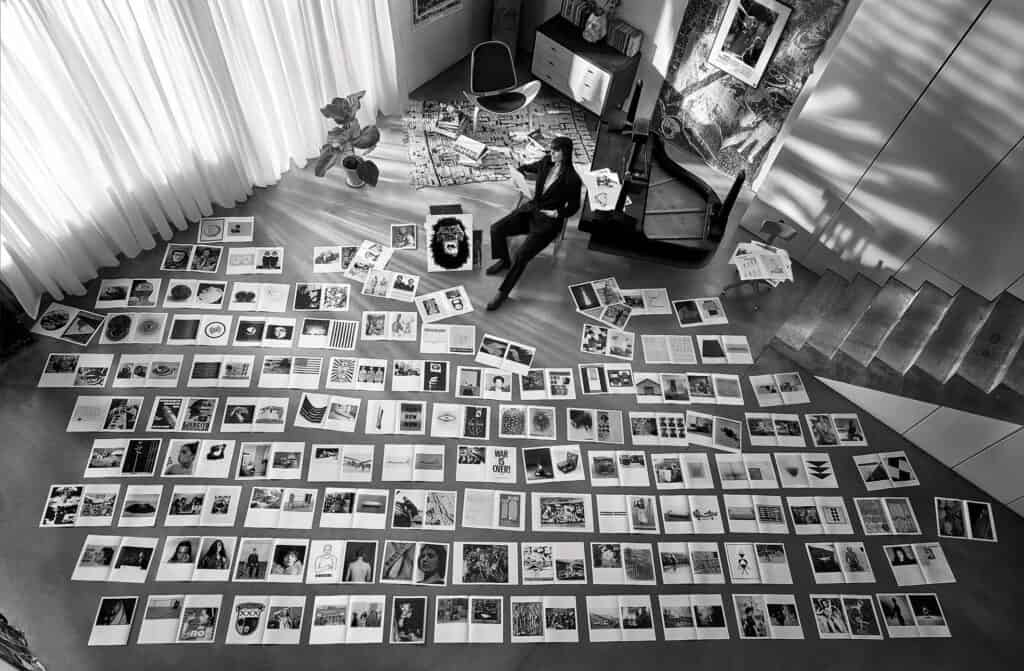

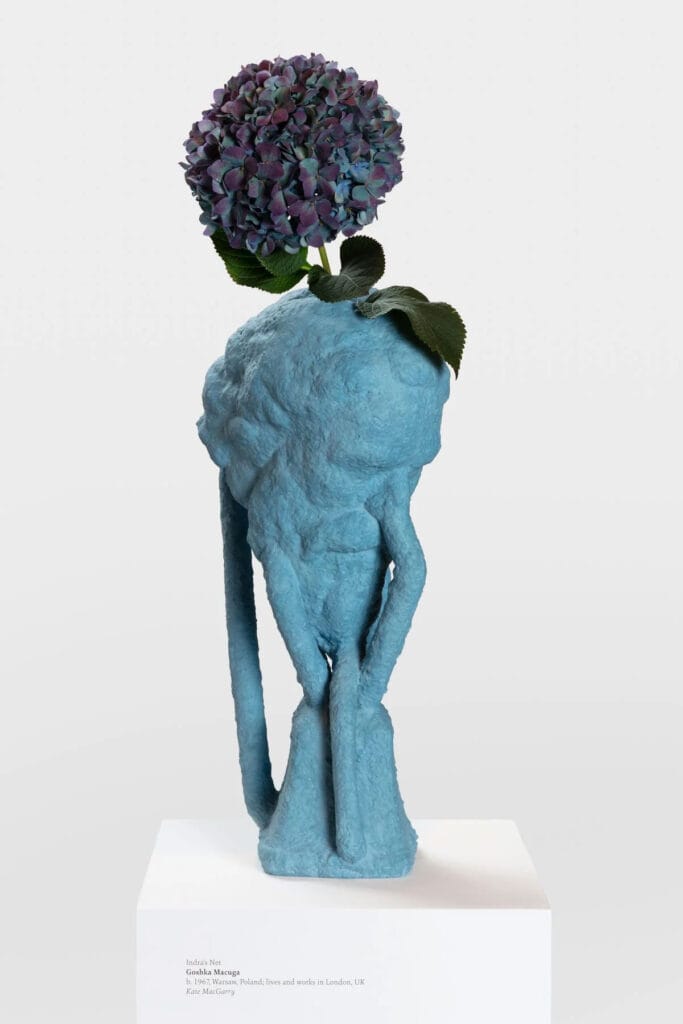

62 x 25 x 30 cm, Edition of 5, courtesy of the Kate MacGarry Gallery.
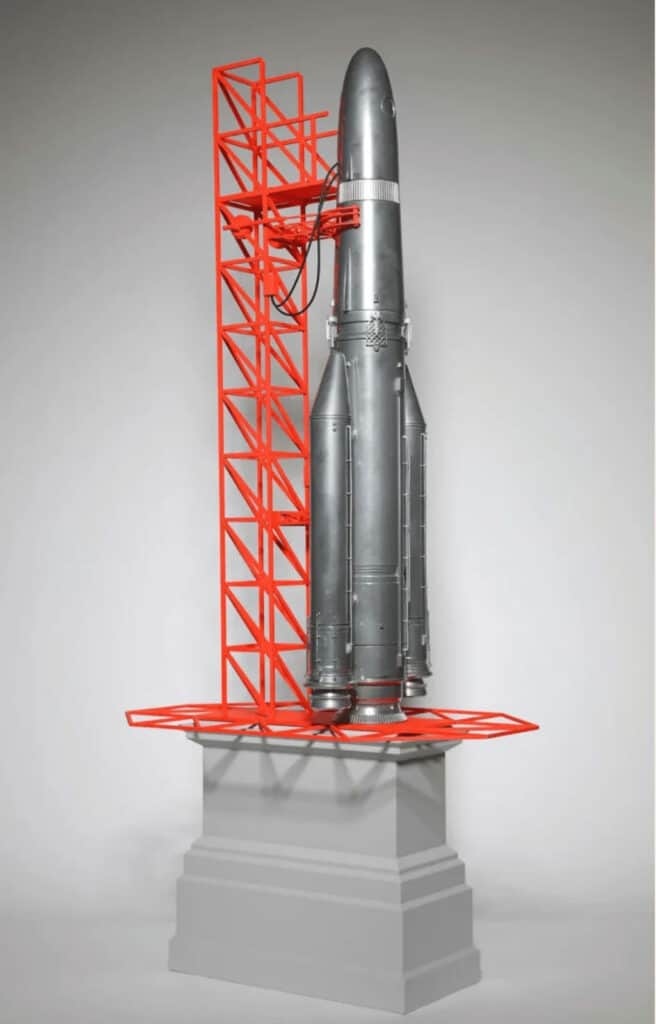

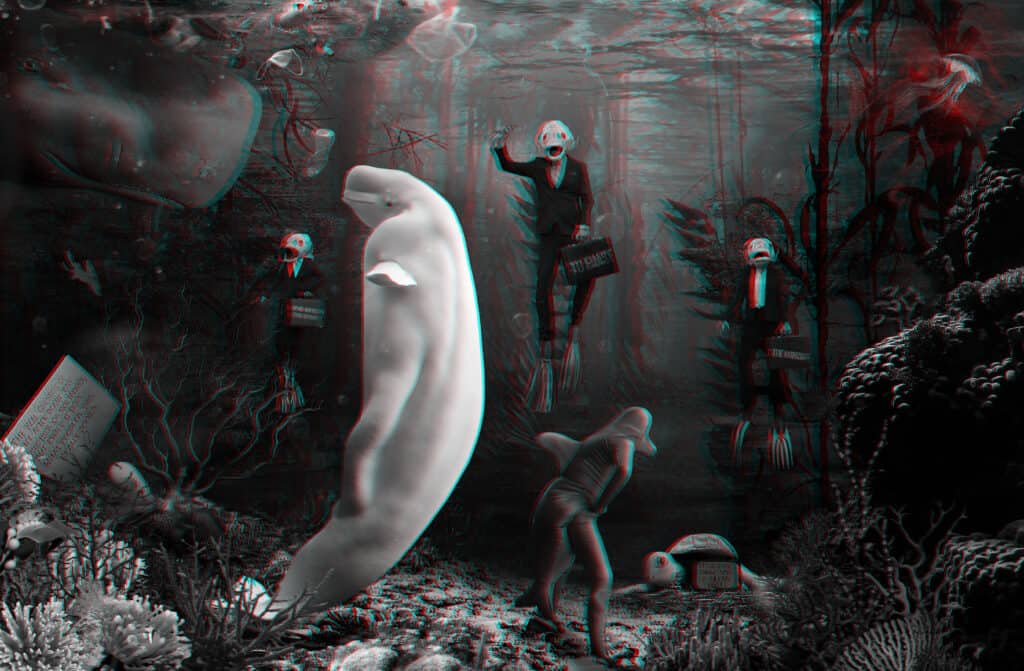

Courtesy of Kate MacGarry Gallery and Goshka Macuga
Paulina Ołowska has achieved impressive results in the international art scene and over the years has actively participated in art biennials such as Istanbul, Moscow, Berlin, and Venice. In her practice, she works at the intersection of painting, installation, performance, and photography, placing female bodies objectified in visual culture at the center of her research. Ołowska’s work includes playful elements taken from the visual and cultural sphere of Eastern Europe, with content inspired by mass media products, symbols of social status, but also craftsmanship, and socialist symbols. Her work focuses on forgotten figures and micro-narratives, consciously recreating popular aesthetics through photography, fashion, political propaganda posters, album covers, graffiti, lifestyle magazines, and billboards. Ołowska received the prestigious Aachen Art Prize in 2014, accompanied by an exhibition at the Ludwig Forum for International Art in Aachen, Germany. Her large portraits of women in sweaters, inspired by postcards from the 1980s Polish People’s Republic, were exhibited in 2010 at the Metro Pictures gallery in New York, where she also presented a series of paintings called Haus Proud. In terms of collaborations in the field of performing arts, Paulina Ołowska contributed to the adaptation of a play based on Zofia Stryjeńska’s work Slavic, Goddesses and the Ushers, presented in New York in 2017 and at the Museo del Novecento in Milan in 2018, in collaboration with the Furla Foundation. Ołowska is represented by Pace Gallery, where she held the exhibition Squelchy Garden Mules and Mamunes (2022) in which she exhibited a series of paintings, collages, films, and sound installations that thematically reinforce narratives about women. In 2023, Olowska presented the show called Visual Persuasion at the Sandretto Re Rebaudengo Foundation in Turin where, acting not only as an artist but also as a curator, she created a space for dialogue between works and images already present in the Foundation’s collection and her personal installations. Ołowska’s continuous experimentations with idioms and artistic languages of the past have pushed her to look more closely at the leading figures of feminism, leaving creative space for associations, affections, and fantasies that emerge freely.
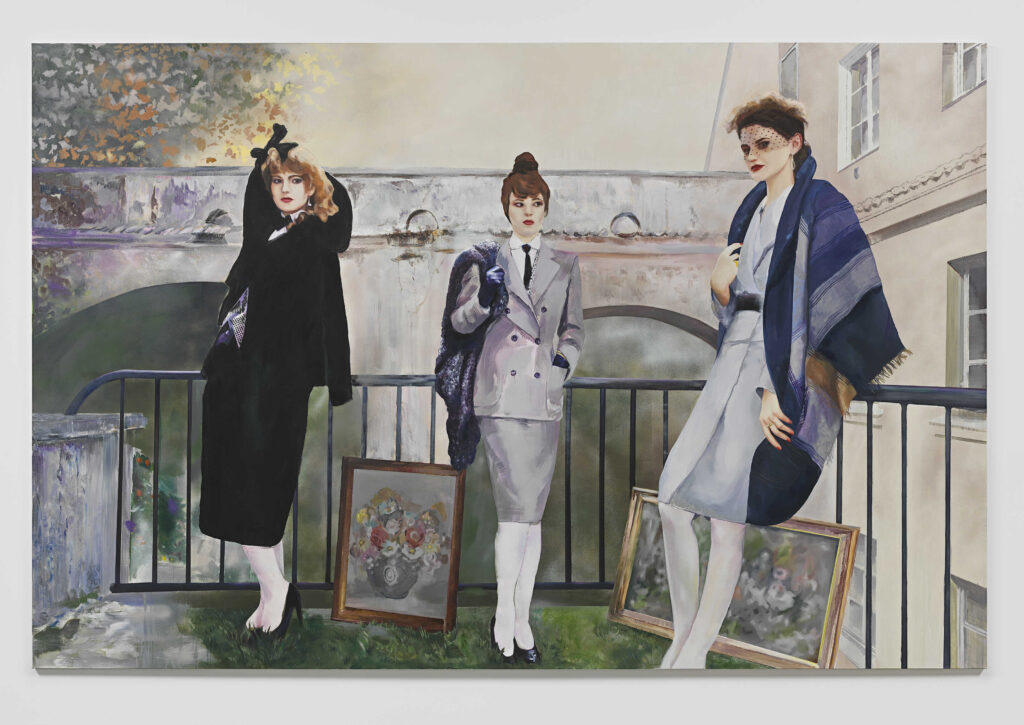

courtesy Pace Gallery
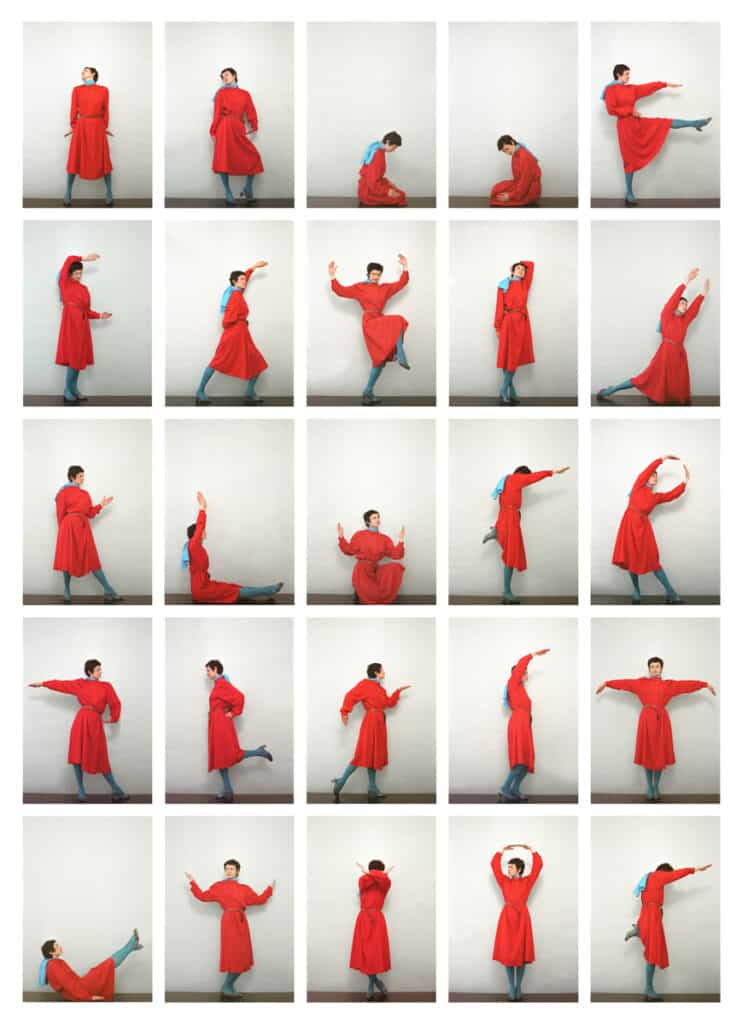

Graduated from the Faculty of Graphics at the Academy of Fine Arts in Warsaw, Grzeszykowska conducts her research mainly through photography, video, and sculpture, but it is through corporeality that she explores the themes of intimacy and self-awareness. Since 2005, Grzeszykowska has been individually exhibiting her projects in which, by manipulating her own body image, she questions social norms regarding identity and its visual representation. Through the presence of sculptural forms in which she recreates body parts in wax, a sense of denial or fragmentation of the self emerges, activating the symbolic charge of what is not clearly visible but remains imprinted in the memory. The central theme of Aneta Grzeszykowska’s research is the mystery surrounding identity expressed through the dialectic of presence and absence, invisibility or disappearance, and the comparison of the body with the sublime and extended thought in a work of art. In each work, action, or gesture, the anatomical parts photographed question the gap between natural and artificial, playing with visual perception to explore a universal but elusive dimension. She was the winner of Polityka Passports in 2013. In spring 2018, photographs by Aneta Grzeszykowska and Zofia Rydet were presented by the London-based Calvert 22 Foundation in the Family Values exhibition at Tate Britain. In 2019, photographs from the Selfie series were part of the exhibition The Body Electric, available at the Walker Art Center in Minneapolis and enriched the collection of the Center Pompidou in Paris. Grzeszykowska is represented by Lyles & King Gallery in New York and Raster Gallery in Warsaw. She participated in the 59th Venice Biennale in 2022, where she exhibited a series entitled Mama (2018). In this work, the artist explored and questioned the social constraints placed on bodies and roles, depicting her daughter interacting with a silicone doll that bears an uncanny resemblance to the artist herself. In this way, Grzeszykowska presented motherhood as a study of self-alienation. The artist’s solo exhibition in New York at the Lyles & King Gallery was widely covered by the international art press such as Artforum, The New Yorker, Artsy, Office Magazine, and 4Columns. In April 2023 during the Preview Milan #7 project, Raster Gallery presented the exhibition of Aneta Grzeszykowska’s and Olaf Brzeski’s works. The exhibition was prepared as a collaboration between galleries such as Artbeat, Tbilisi; Temnikova & Kasela, Tallinn; and Voloshyn Gallery, Kyiv, and took place in Milan’s famous art district, Brera.


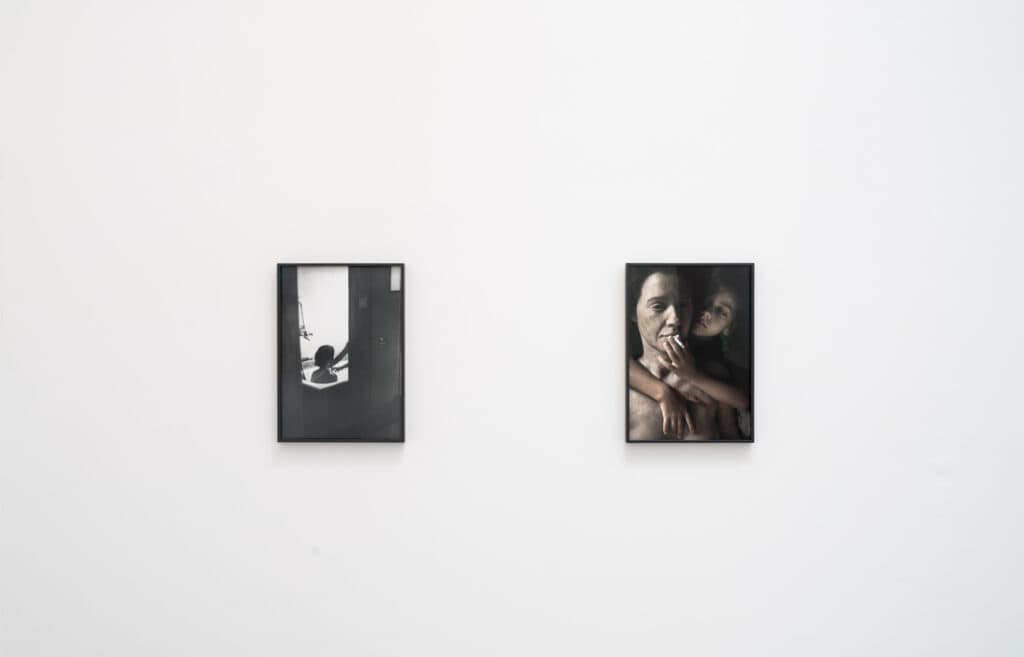

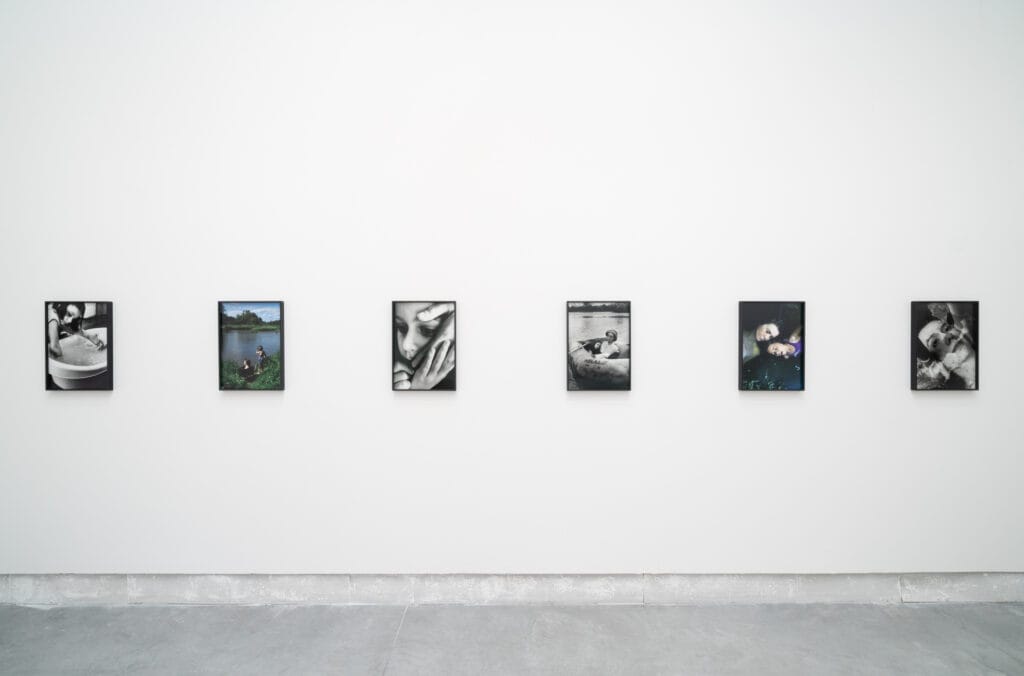

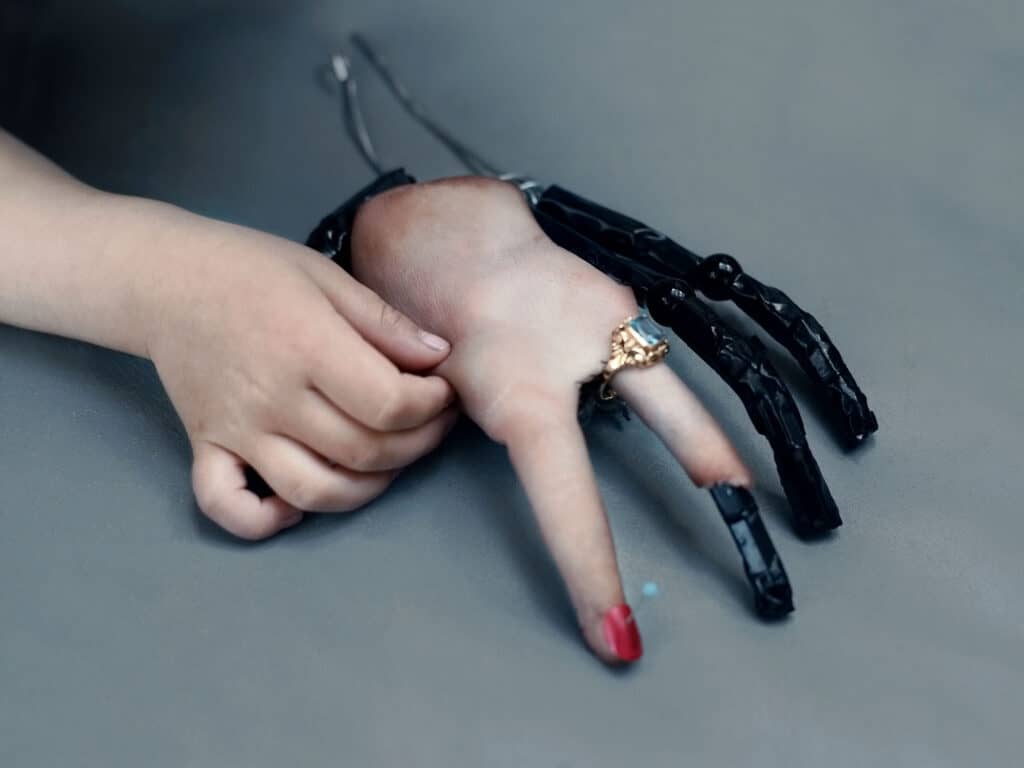

The work of Roma artist Małgorzata Mirga-Tas, born in Zakopane, places stereotypes about the Roma people at the center of attention and seeks to contribute to the construction of an affirmative iconography of this community, documenting their marginalized history in traditional Western historiography. In her recent works, the artist weaves together everyday materials and textiles from her surroundings, creating vibrant, large-scale textile collages. Her works give new life to used materials, bearers of the history of people who wore and used them. By sewing a patchwork of curtains, ornaments, clothes, and bedding, she creates “micro-carriers” of history that contribute to the creation of new narratives about the nomadic Roma community. In her work exhibited at the 3rd Autostrada Biennale in 2021, Mirga-Tas collaborated with the Roma community of Prizren, Kosovo, to insert HERSTORIE, a series of portraits of extraordinary Roma women, into the urban space. In 2022, during the 59th Venice Biennale, the artist exhibited her patchworks in the Re-Enchantment of the World exhibition of the Polish Pavilion, which subsequently continued at Castello Estense in Ferrara, Italy, and in 2023 at Centro Andaluz De Arte Contemporary, Seville. The inspiration for the artist’s installation came from the Renaissance frescoes of Palazzo Schifanoia in Ferrara, famously used by art historian Aby Warburg to demonstrate the repetition of certain artistic motifs across cultures and centuries. In the same period, she also participated in Documenta 15, simultaneously presenting her textile collages to the public but in smaller dimensions, similar to paintings. In September 2023, Mirga-Tas presented a series of portraits in an exhibition called Siukar Manusia at Frith Street Gallery. The exhibition took its name from the Romani language, which means extraordinary people and represents a cross-section of the Roma community of Nowa Huta in Krakow. The works were collected using found and donated fabrics, carefully selected and used by the artist. Her goal was to give new life to waste fabrics while providing visibility and dignity to the people who wear them. With an activist gesture, Mirga-Tas immortalized figures personally important to her, such as concentration camp survivors, Roma activists, and exceptional artists, using personal materials collected together with the local community and adding testimonies of the Holocaust from the extensive audiovisual archive of the ‘USC Shoah Foundation. Mirga-Tas’ works are included in the 2024 edition of the Diriyah Contemporary Art Biennale, Saudi Arabia. In the summer of 2024 the artist will present an exhibition at the Bonnefantenmuseum in Maastricht with some of her most significant works, I Have a Dream-Suno Mangie Dzialas.






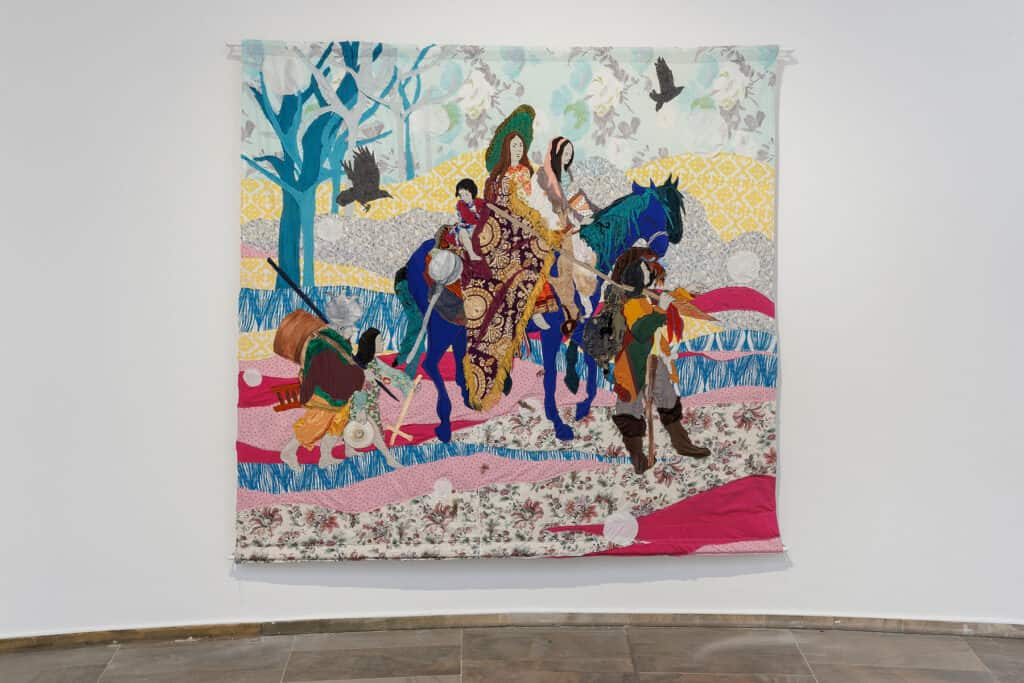

A graduate of the Poznań University of Arts, Monika Sosnowska completed her postgraduate studies at the Rijksakademie van Beeldende Kunsten in Amsterdam in 1998. Her sculptural language arises from the experimentation and appropriation of fragments of building materials, such as bars, reinforcing tubes, and steel beams. These elements, constituting a solid and rigid foundation for buildings, are subject to manipulation and distortion, gaining independence in a new form of sculptural environment in which their solid, yet fleeting functionality is questioned. Sosnowska, playing the role of an urban archaeologist, draws inspiration from the experience of post-war modernization and the landscape to the raw, modernist buildings well known to the inhabitants of Eastern Europe. She gained international recognition in 2003 thanks to the Corridor intervention, consisting of a narrow and disorienting passage, which was part of the Clandestine exhibition at the Arsenale at the 50th Venice Biennale. Four years later the sculptor represented Poland at the 52nd Venice Art Biennale with the monumental 1:1 installation, faithfully reconstructing the structure of the Polish pavilion with a steel beam frame structure that she almost organically deformed to fit into the inside of the pavilion itself. Using part of the building’s infrastructure, she added a second architectural framework from the inside, in which she examined errors in the functionless structure, absurd ideas, and architectural implementations. Her work, through the deformation of rigid industrial materials, reflects on the political and cultural significance of the infrastructure in the urban fabric. Sosnowska treats buildings as places of memory, often evoking specific traces of historical architectural utopias contained in structures examined at the moment of their failure.
The artist was the winner of the 2003 Baloise Art Prize and the Polityka Passport in the field of visual arts. She was also nominated for a Hugo Boss Award in 2012 and has participated in artist residencies at Atelier Calder in Saché, France (2014) and S-AIR in Sapporo, Japan (2002). Since then, she has opened a series of solo exhibitions at Ginza Maison Hermès in Tokyo (2015), and the Australian Center for Contemporary Art (ACCA), in Melbourne, Australia (2013). In 2022 Fatigue published her works on the occasion of her solo exhibition at the Kunstraum Dornbirn and in 2023 Sosnowska held her retrospective exhibition at the Zentrum Paul Klee in Bern, which summarizes the last 20 years of her artistic practice. The artist is represented by Galeria Kurimanzutto, Atelier Calder in Saché, and Captain Petzel.
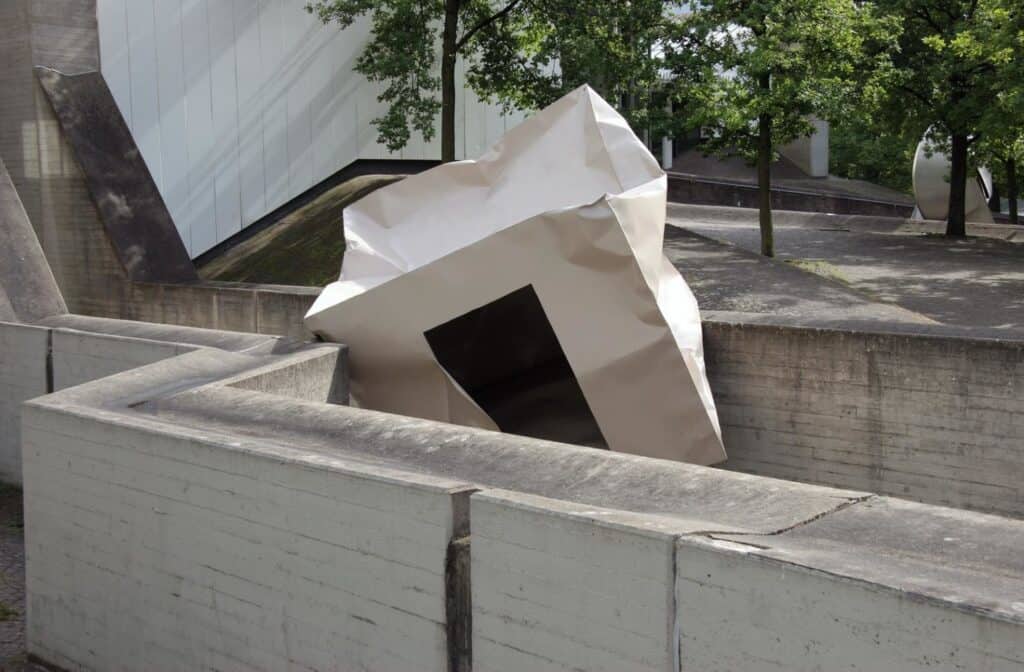

Untitled, 2006, steel and enamel paint, installation view at sprengel museum, hannover, 2006. Courtesy of the artist and kurimanzutto, Mexico City / New York.
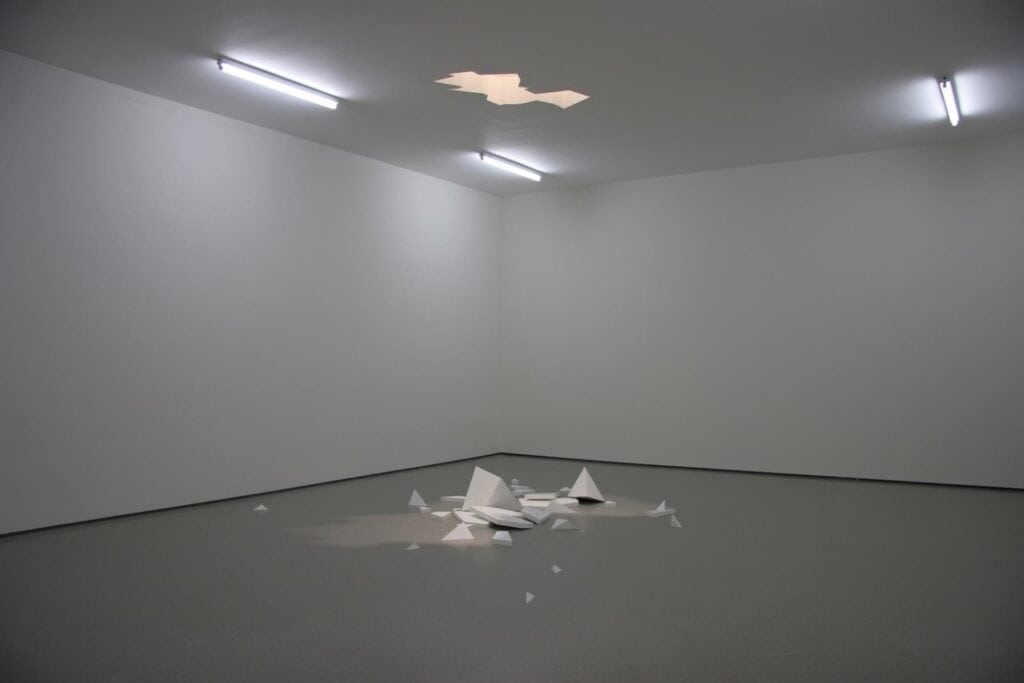

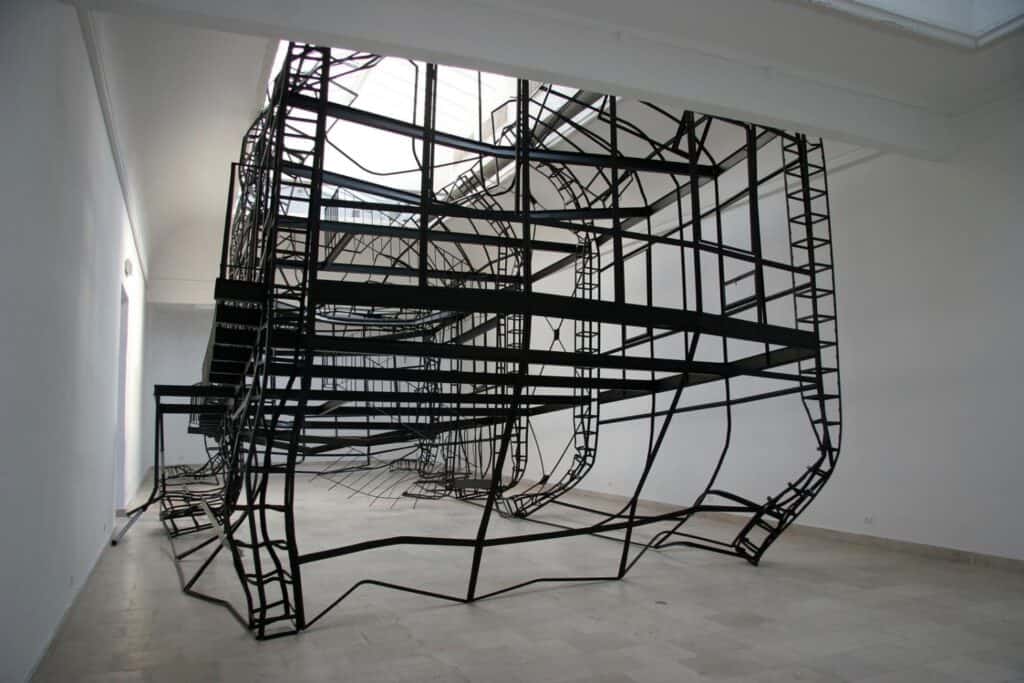

An important reference point in Iza Tarasewicz‘s work is the small village near Białystok where she grew up, Kolonia Koplany, which represents not only her home but also her creative workspace. The artist’s roots, the rhythm and circular cycle of life, and the ritual that accompanies organic work in the dismantling and reconstruction of simple post-work fragments are among the main themes of her subjects. A graduate of the Faculty of Sculpture and Performing Arts at the Poznań University of the Arts, Tarasewicz works with sculpture, installation, drawing, and performance, entering into dialogue with the surrounding architectural structures. In the initial phase of her artistic practice, her “objects” were composed of overlapping layers of decomposing organic animal tissue. During her career the artist focused more on the use of metal, transforming it into new, unexpected geometric arrangements, transcending the rigid division into natural and artificial. Her ephemeral sculptural objects are born as a result of a re-appropriation of elements of the countryside and a manipulation of their fragments. In the course of her artistic career, an ever-increasing tendency towards minimalism can be found. Her works are characterized by a complex set of fragments with possible interactions, transformations, transmutations, and connections between them that refer to chaos theory and the rhythmic flow of loops and repetitions. Tarasewicz’s works have a performative dimension and provoke a confrontation with the viewer, thanks to which the apparently passive material regains action, creating new rhythmic connections between the elements of space. Her works often take the form of interconnected modular systems that multiply indefinitely, and even a small change within them can result in unpredictable system behavior and a different flow of information. In 2016 she participated in the 5th Moscow International Biennial of Young Art and the 11th Gwangju Biennale, and in 2018 you represented Poland at the 16th Venice Architecture Biennale in collaboration with Centrala. Tarasewicz is represented by Gunia Nowik and Croy Nielsen Gallery in Vienna, where in 2018 she presented her solo show In Countless Things, exhibiting her intricate and ephemeral biomorphic structures that interact with the surrounding architecture, composed of oxidized steel mixed with rubber asphalt mass and fungal organisms. Her work has been featured in numerous solo and group exhibitions internationally in Europe, Asia, and South America. At the 32nd Sao Paulo Biennial in 2016, Iza Tarasewicz developed a long-term research project entitled Mbamba Mazurek which rediscovers how the rhythm and dance of Mazurek has spread throughout the world due to the process of colonialism. The performance aimed to examine the interdependent relationships between work, movement, rhythm, and the reconstruction of a collective identity. In a recent intervention, the artist combined performative expressive values, integrating her ephemeral sculptures with a performance titled The Rumble. This was showcased during her exhibition The Rumble of a Tireless Land at Tramway in Glasgow, Scotland in 2022.
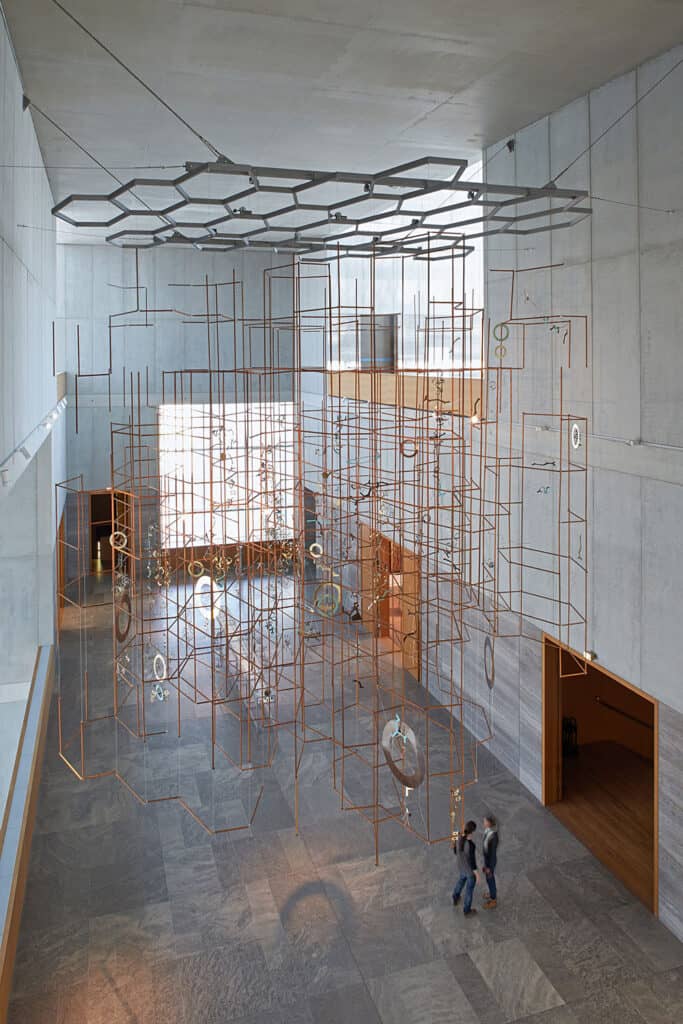

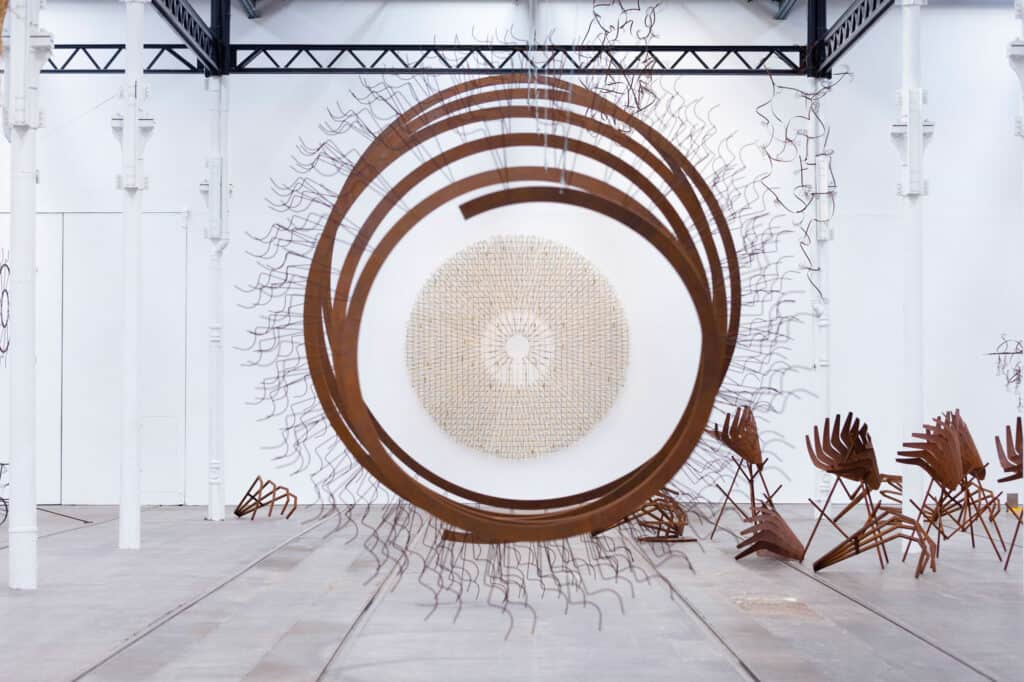



Kinga Kiełczyńska studied Spanish philology at the University of Warsaw before graduating from the Gerrit Rietveld Academy and the Sandberg Institute in Amsterdam. Her multidisciplinary artistic practice reflects on the relationship between living beings, their ecosystems, and natural habitats, applying strategies of recycling and reusing materials. The artist often exhibits her works in unconventional places such as nudist beaches, nightclubs, and forests, exploring the potential intertwining of the urban or rural landscape invaded by non-human ecosystems. The artist’s works are described as “environments” composed of moving images and digital media. In 2009, she wrote the Manifesto of Reductionist Art, challenging the art-making paradigm by jokingly proclaiming the idea of reduction rather than production. Her works have been exhibited in group shows, such as Skyways, Minneapolis, USA (2019); Klosterruine and Naturwald Akademie, Berlin (2020), D21 Kunstraum, Leipzig (2021); Internationaler Lantz’scher Skulpturenpark, Dusseldorf (2021); Belo Campo, Lisbon (2022); Exile Gallery, Vienna and Erfurt (2023), and others. Her recent projects featuring floors made from primeval Białowieża wood and exhibited at the Palace of Culture and Science in Warsaw focused on the protest related to deforestation in Białowieża, Poland. Kiełczyńska supports reappropriation strategies applied to urban space, evident in her street performances in Palermo, where she participated in Manifesta 12 in 2018 with her work Seicento (2007-2023). In this installation, the artist appropriated some palm trees taken from the waste of the local Botanical Garden and intersected them with a Smart car (commonly seen on city streets). The work was inserted in the historic center of Palermo, an action that she had previously also developed in the streets of Berlin, and managed to create a space for dialogue between the local urban fabric and the community. Kielczynska is represented by the Herbarium Collection and Exile Gallery in Vienna, where in 2022 she opened a solo show entitled Bonus Stage of Evolution is Being Constantly Thirsty. The exhibition included a video, sculptures, and a tent, all arranged in a specific environment, where connections between different materials, such as woven wood and recycled cables, raised questions about excessive waste production and the exploitation of natural sources.
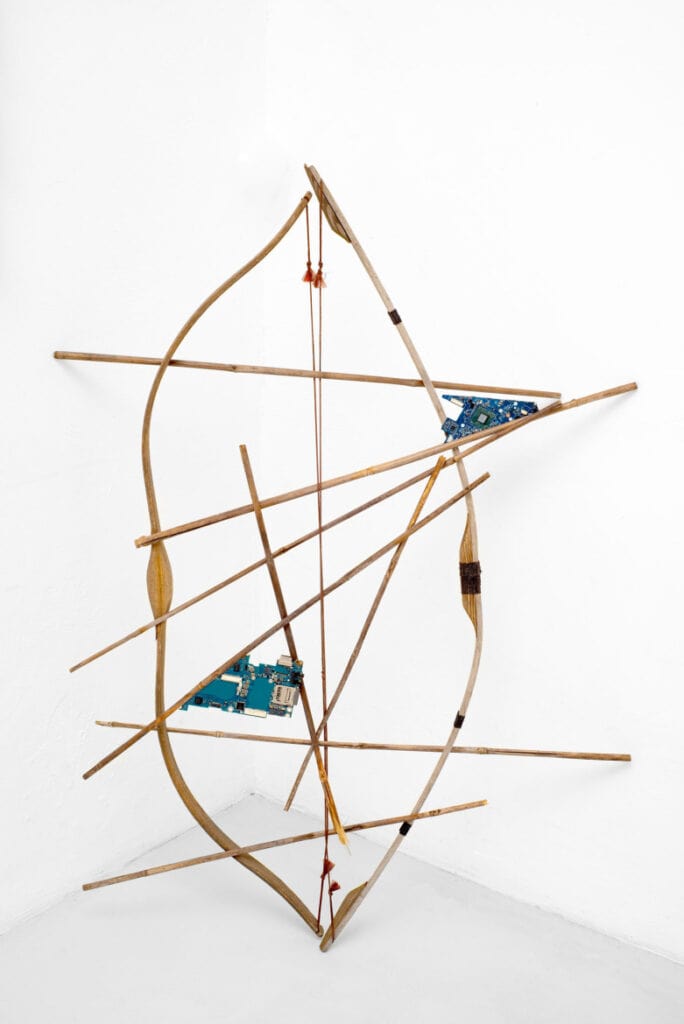

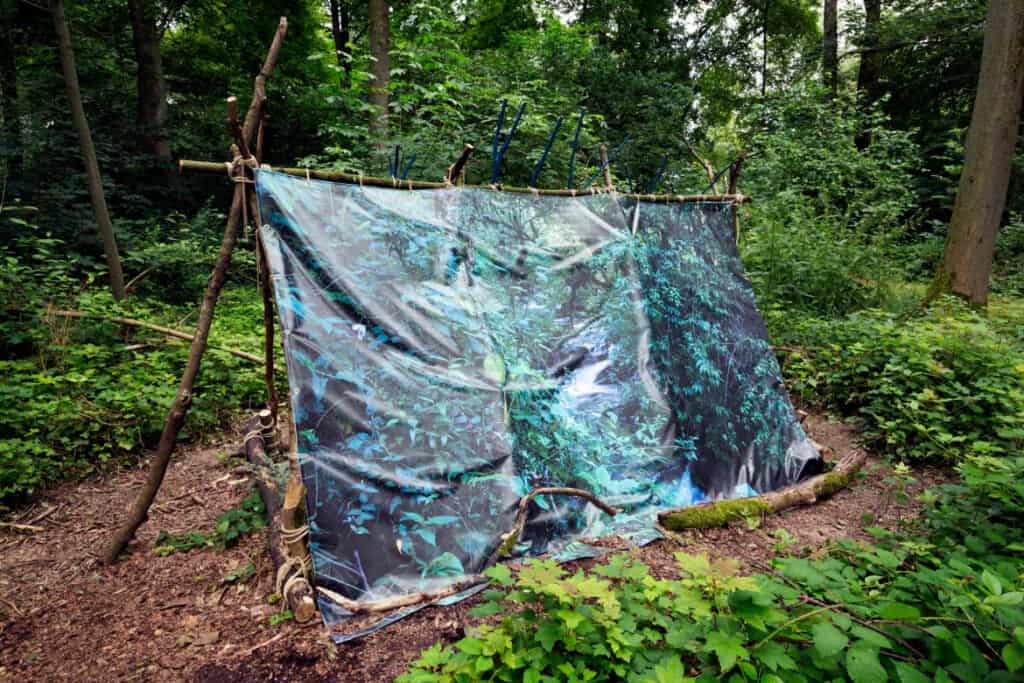



Gizela Mickiewicz
Gizela Mickiewicz completed her studies at the Poznań University of Arts. Over the years her works have been exhibited in numerous personal and collective exhibitions, such as Palma de Mallorca at the L21 Gallery (2023), Lucas Hirsch in Dusseldorf (2017), Frutta Gallery in Rome (2013), and the Künstlerhaus in Dortmund (2012). Mickiewicz explores various types of expressive languages, such as sculpture, installation, and drawing, examining, in her artistic practice, bodily orientation in the world around her and the way in which inner life and interpersonal relationships are represented through gestures, posture, and movements. Her artistic interests focus on material culture, with a particular interest in examining relationships between objects and entities. Gizela Mickiewicz tends to create sculptural objects depicting spiritual states in physical forms, using a variety of materials commonly found in everyday life, such as steel, ceramic, feathers, plastic, tangled linen fabric, and polyurethane foam. The artist explores the potential of negative space, the fragmentation of the human body, and the multiple meanings that she can capture in the processes of remembering and forgetting events. In her work, she usually deals with the material and ontological aspects of forms, which she extracts and isolates from their original context. Using minimal artistic interventions, she manages to give materials a new identity and transform them into works of art. All emotional tensions play an active role in the creation of the material and the sculptures with abstract shapes are deliberately incomplete and left open to interpretation. Mickiewicz gives her constructions a performative dimension, in which fragments of carved limbs participate in a gesture of healing or decomposition and create the structure of the exhibition space. The artist has participated in numerous artistic residencies, at the Künstlerhaus in Dortmund (2012), the Gasworks in London (2014), and the Triangle in New York (2016), and her works have been exhibited in various group exhibitions in Berlin, Geneva, Cologne, Timișoara, Vilnius, Bratislava, Brussels and New York. In the summer of 2023, Mickiewicz exhibited her sculptures in a show at the Galleria Renata Fabbri in Milan, entitled Grappling with Gestures, the Gaze Wanders, presenting her sculptures in dialogue with the paintings of Alessandro Teoldi. Her works emphasize the concept of emptiness, intimacy, and bodily tension expressed in a combination of figurative and abstract forms ready to be realized.
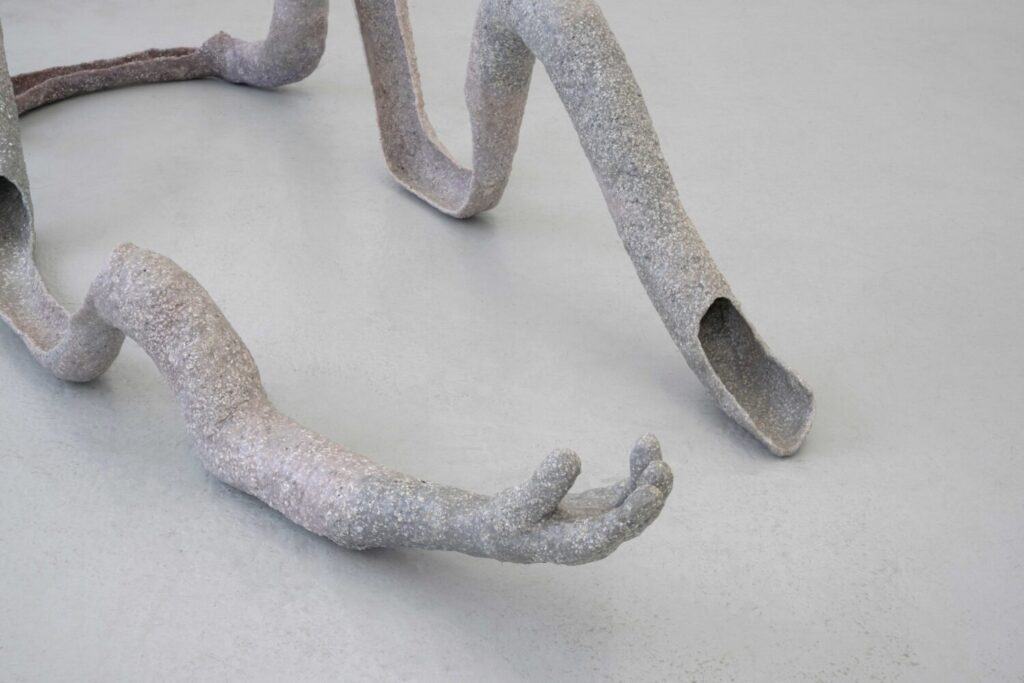

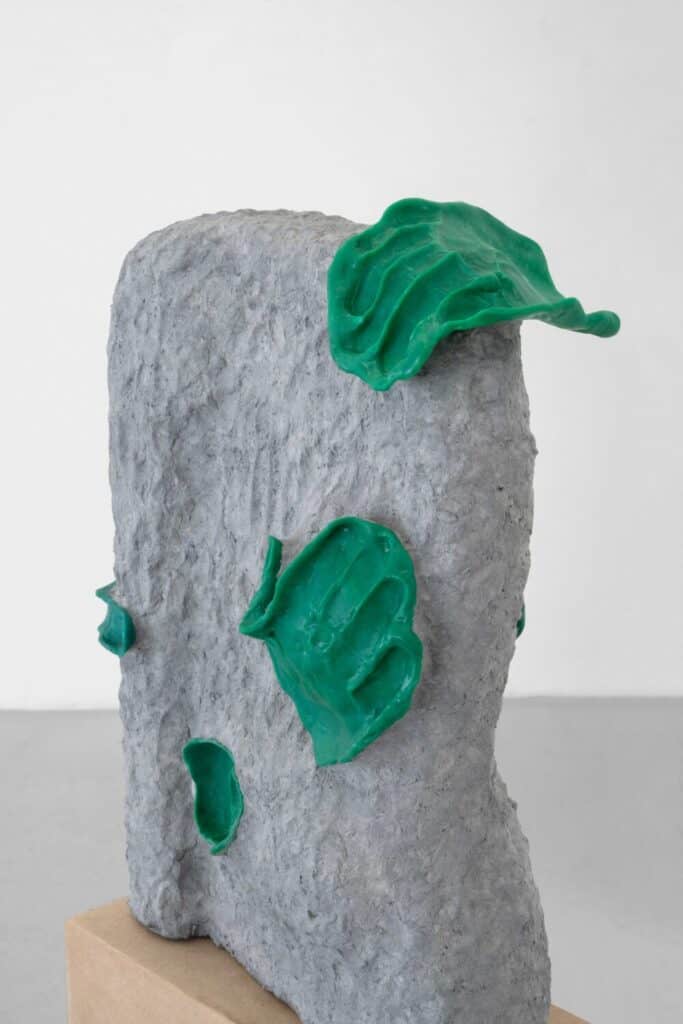

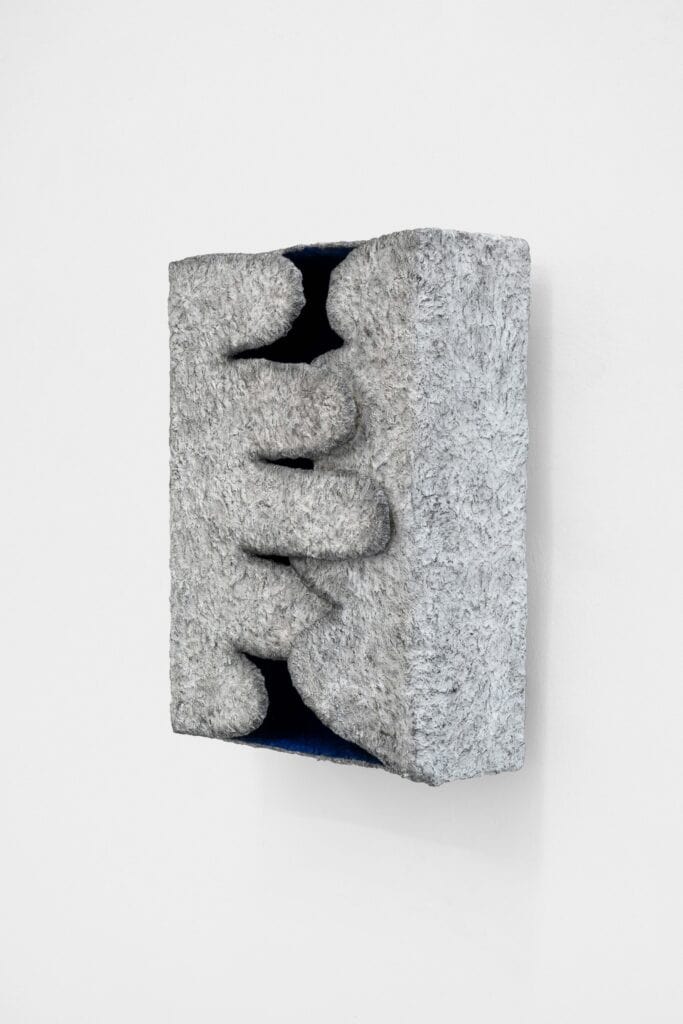

written by Aleksandra Lisek

